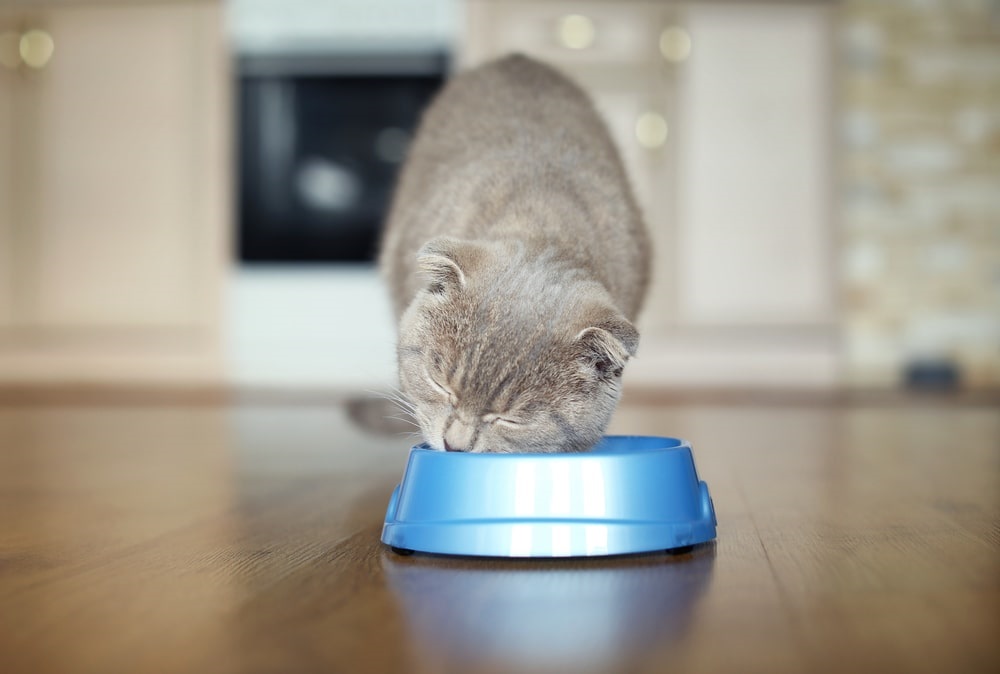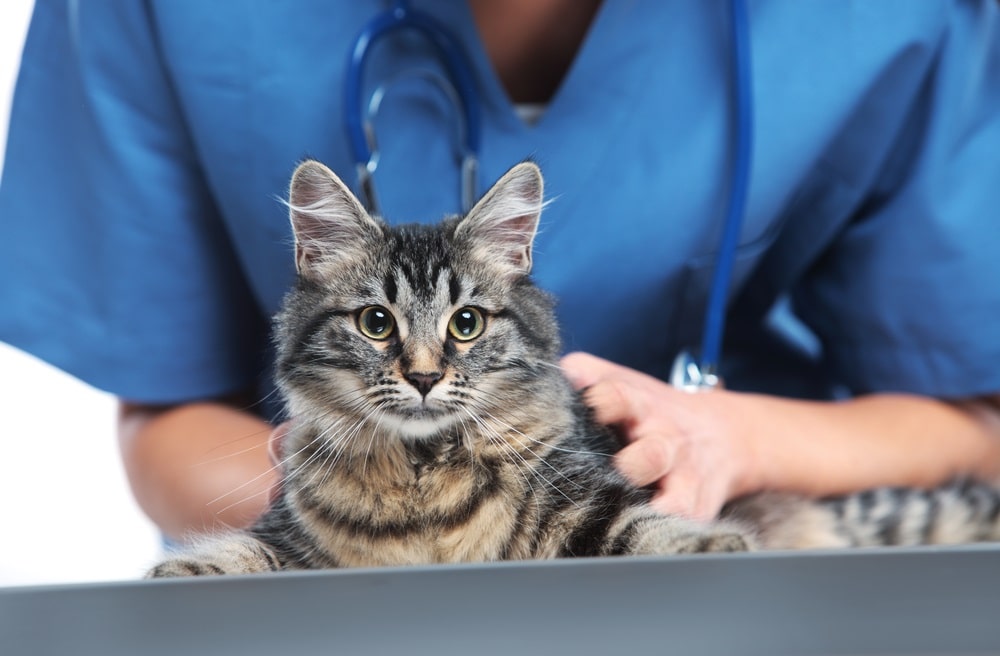
Do you know your cat can spend up to 5 hours a day grooming itself? This constant grooming leads to the accumulation of hairballs, often causing discomfort or constipation.
Many cat owners turn to Laxatone as a remedy to help relieve hairball-related constipation in their cats.
But how long does it take for Laxatone to work? And what should you know before using it?
Let us take a closer look at Laxatone to further understand its composition, how it works and what you should know to help your feline friend feel its best.
What Is Laxatone?
Laxatone is an oral gel that helps to improve a cat’s bowel movement. It is usually recommended by vets for feline constipation due to hairballs.
In other words, laxatone is a mild laxative that helps a cat suffering from constipation.
The main ingredients are corn syrup, molasses, white petrolatum USP, light mineral oil NF and gelatin.
It comes in both tuna and malt flavors to make it easier for cats to consume.
How Does Laxatone Work?
The active ingredients, white petrolatum USP and light mineral oil NF, help to coat and lubricate the cat’s digestive tract and hairball.
This allows the stuck hairball to move easier along the cat’s intestines and get expelled in the cat’s stool or vomit.
How Long Does Laxatone For Cats Take To Work?

How long it takes laxatone to work depends on your cat’s age, overall health and severity of feline constipation.
For most cats, it usually takes between five to six days to see any effects. Cat owners should allow for at least up to two weeks for it to be fully effective.
With more natural remedies, it can take longer for it to work as the ingredients aren’t very harsh on your cat’s body.
If you need a treatment that is more immediate, giving your cat an enema would be a better option.
It would also be best to start checking your cat’s litter box for signs of hairballs in the stool.
How Much Laxatone Should I Give My Cat?
Most vets would recommend 1/2-1 teaspoon of laxatone gel daily for a few days followed by a smaller amount of 1/4-1/2 teaspoon once every two to three days.
You might be asked to feed your cat less or more depending on the vet’s diagnosis of your cat’s constipation caused by the hairball.
Can Laxatone Be Mixed With Food?

Yes, laxatone can be mixed in your cat’s food since it comes in gel form. It would be easier to mix it in wet food than dry food.
The good thing about laxatone is that it comes in both tuna and malt flavors. Most cats would gravitate towards the tuna flavor as it is a smell and taste that they like.
Try feeding your cat directly instead of mixing it in its food to gauge its response.
You can also place the gel on the top of your cat’s paw or at the side of its mouth which will make them lick it up.
Does Laxatone Need To Be Refrigerated?
It isn’t necessary but it needs to be at least kept in a cool place. It contains oil which can turn rancid if placed under direct sunlight or near a heat source.
Once it has gone bad, your cat won’t want to have anything to do with it.
Even if it does, feeding your cat medication that has gone bad can cause digestive issues and abdominal pain.
Does Laxatone Make Cats Throw Up?

Laxatone works by coating the hairball thus making it easier for your cat to expel it via its excrement. But some cats might expel the hairball by puking it up.
If your cat vomits up the hairball instead of passing it out, it does show that the gel is working.
But if your cat is vomiting more than once and with no hairball, it could mean an allergic reaction to laxatone and needs to be treated by the vet immediately.
Does Laxatone Cause Any Side Effects In Cats?
Laxatone is a mild laxative for cats and should not cause any adverse side effects in your cat. It might cause some diarrhea for a short time since it is a laxative.
But this usually clears up by itself after a few days.
If you notice any other symptoms that are causing your cat to behave differently or strangely, it would be best to bring your cat to the vet for a proper examination.
Make sure to not give your cat too much laxatone as it can cause more issues to its digestive system.
Other Alternatives to Laxatone?
If your cat has an allergic reaction to laxatone or just doesn’t like the taste of it, there are other alternatives that you can consider.
Use Miralax
Miralax is also a mild laxative that man vets recommend for treating cats with constipation.
One thing to note is that miralax is made for humans but the ingredients used are safe enough for cats.
It can be bought over-the-counter at your local pharmacy.
Miralax works by binding moisture in your cat’s intestinal tract to soften up the stool or hairball making it easier to expel.
Many cat owners like giving their constipated cat miralax as it is a tasteless powder that is easy to mix in their cat’s food.
Use Pumpkin
If you are not too keen on using medication, feeding your cat some fresh pumpkin is a good way to help regulate its bowel movement.
Do not buy canned pumpkin that contains sugar or added ingredients.
The best way is to just boil or blend some fresh pumpkin with water. Feed your cat 1/4-1/2 teaspoon a day until it starts pooping again.
Not only does pumpkin help with constipation but it has many other health benefits for your cat.
Use Psyllium Husk
Psyllium husk is another good alternative to pumpkin if your cat doesn’t like the taste. Psyllium husk is tasteless and can be easily mixed into your cat’s food.
In order for psyllium husk to work effectively, it needs moisture as the water causes the husk to coat your cat’s intestinal wall with a gel-like substance thus making it easier to expel the hairball.
Do not use this if you are feeding your cat dry food.
Feed the same amount as you would with pumpkin as an overdose of psyllium husk can clog up your cat’s digestive tract.
Is My Cat Having Constipation?
Before you even start to administer laxatone to your cat, you will need to ascertain that it is experiencing feline constipation.
Here are some symptoms to look out for:
- No bowel movements after 48 hours
- Going in and out of the litter box many times
- Meowing when trying to defecate but nothing comes out
- Lack of appetite
- Hacking and gagging
These signs should be a strong enough indicator that your cat is having constipation.
When Should I Bring My Cat To See A Vet?

Most of the time, when my cat is suffering from constipation, I will use the above remedies first to try and improve its bowel movements.
If your cat’s constipation isn’t severe, it will start to have a bowel movement after 48 hours.
In cases where your cat has not defecated after 72 hours, you will need to bring your cat to the vet for treatment.
Your cat might be having severe constipation due to a large hairball that can be dislodged or an underlying health problem.
The vet might have to give your cat an enema for immediate relief.
Conclusion
Hairballs and cats pretty much go hand in hand due to their grooming habits.
Feline constipation is more common than you think and can be easily resolved with the above methods.
But do not hesitate to seek medical attention if your cat has not had a bowel movement in a few days.
Iggy Thorne, also known as ‘Iggy the Explorer,’ is a seasoned writer with a flair for adventure and a deep love for animals.
Not only does he craft captivating stories often set in the great outdoors, but he’s also a dedicated pet owner who has owned and fostered both dogs and cats.
His expertise in animal care extends to volunteering at local shelters, making him a credible voice in pet ownership.
With a unique blend of humor and adventure, Iggy’s writing is as engaging as it is informative.

